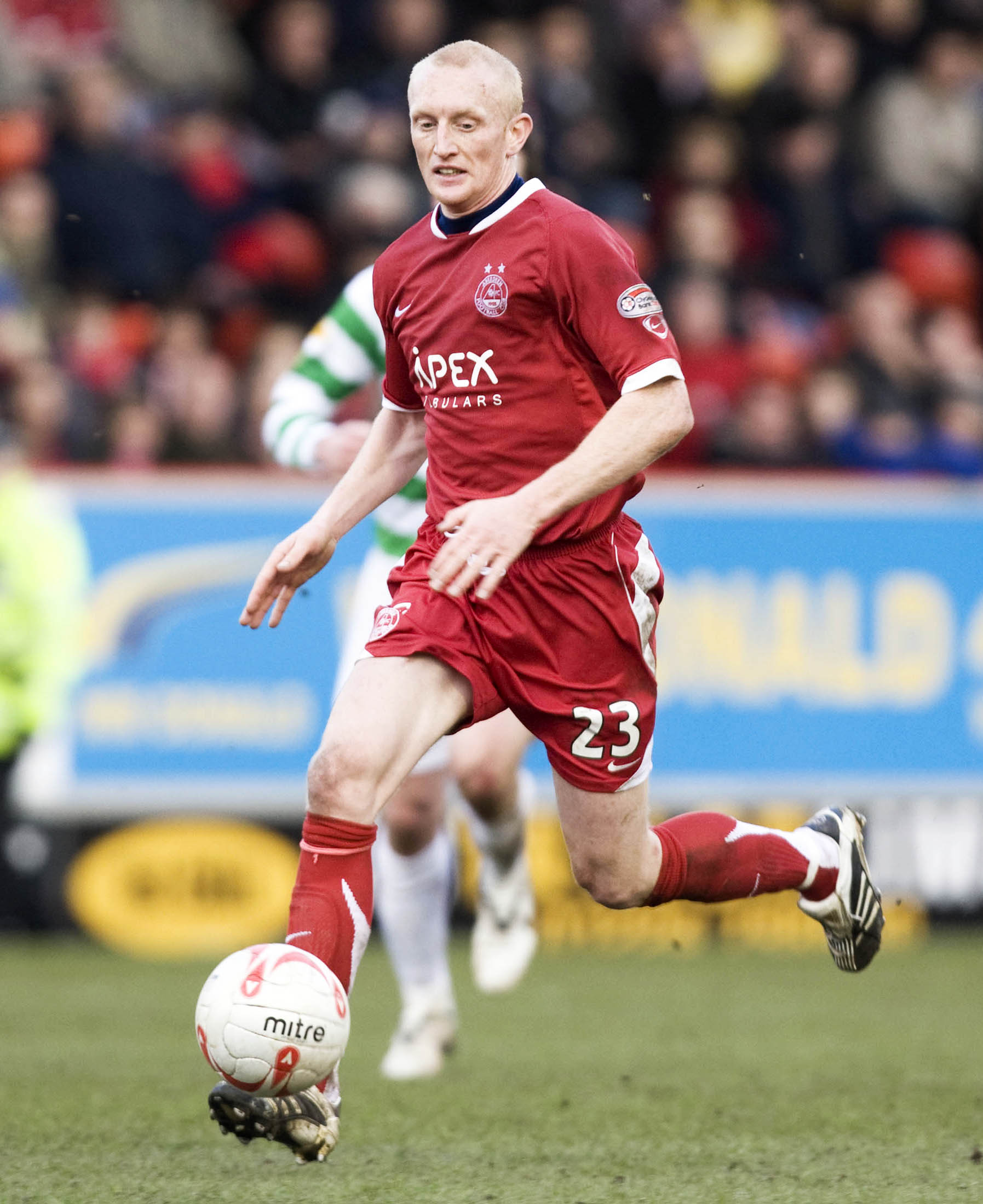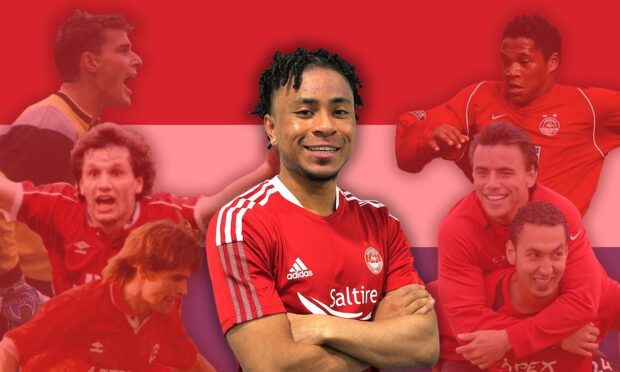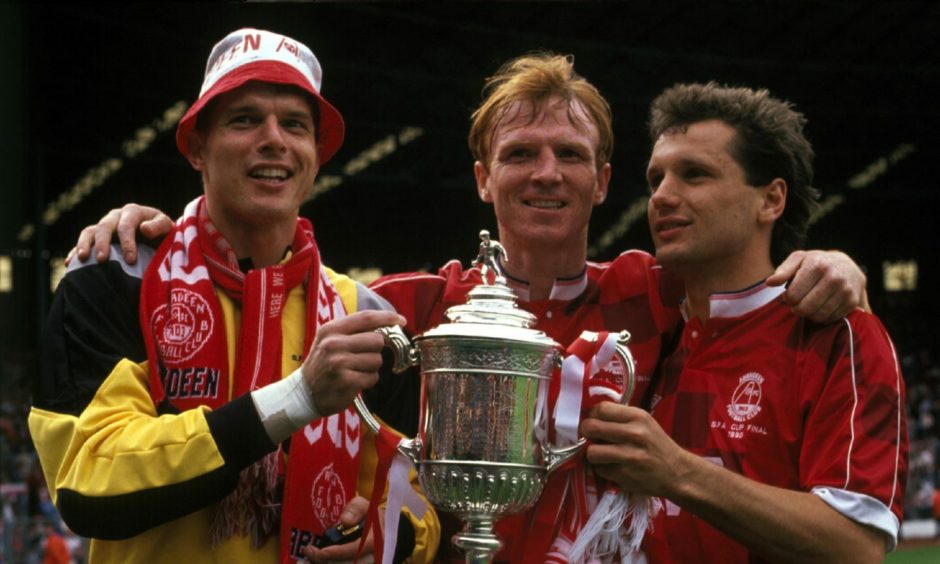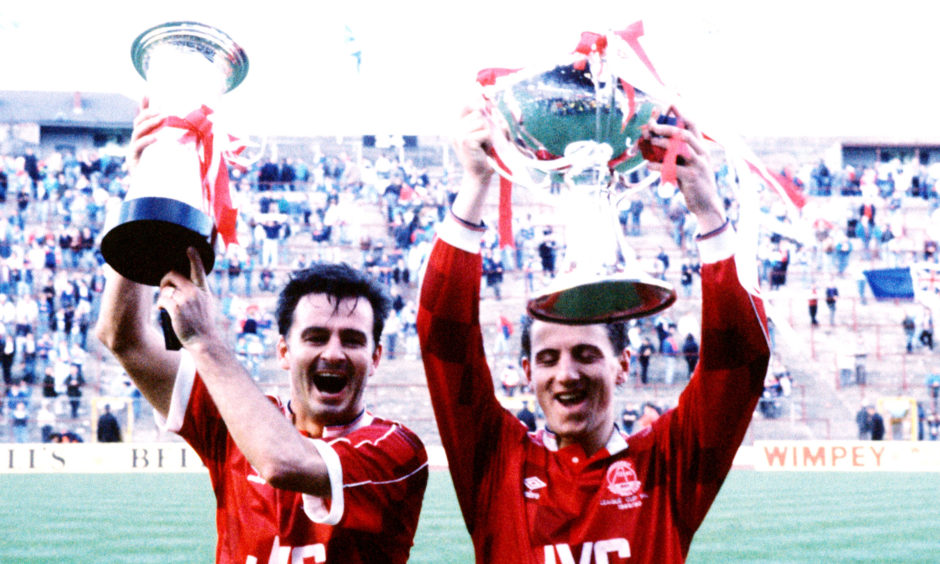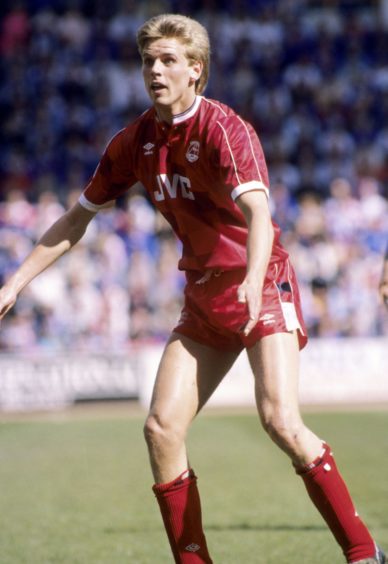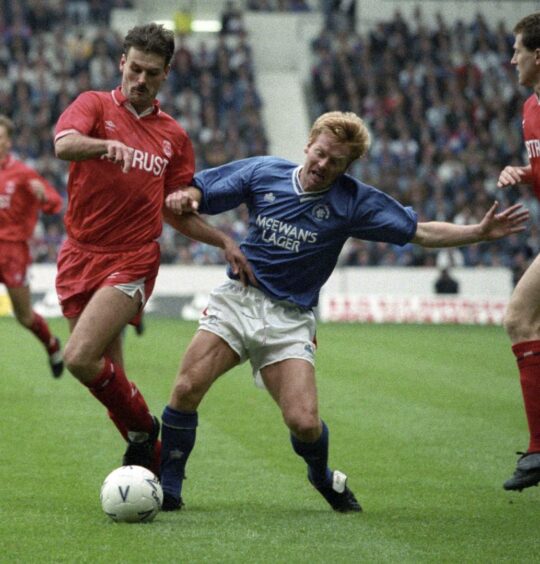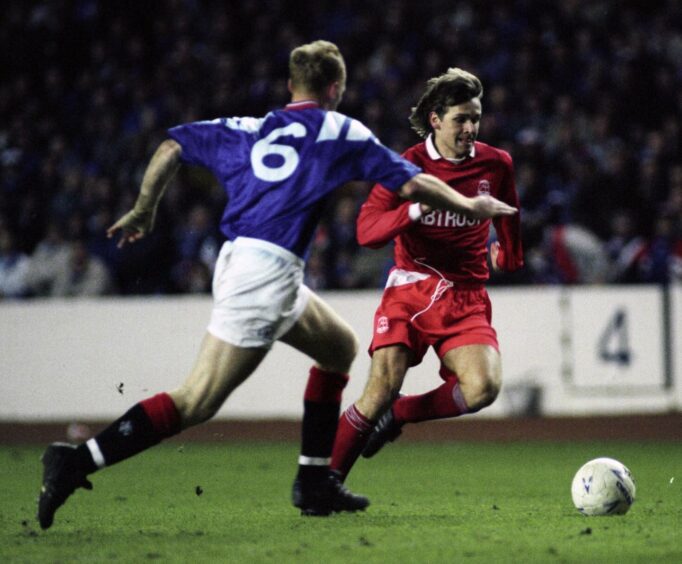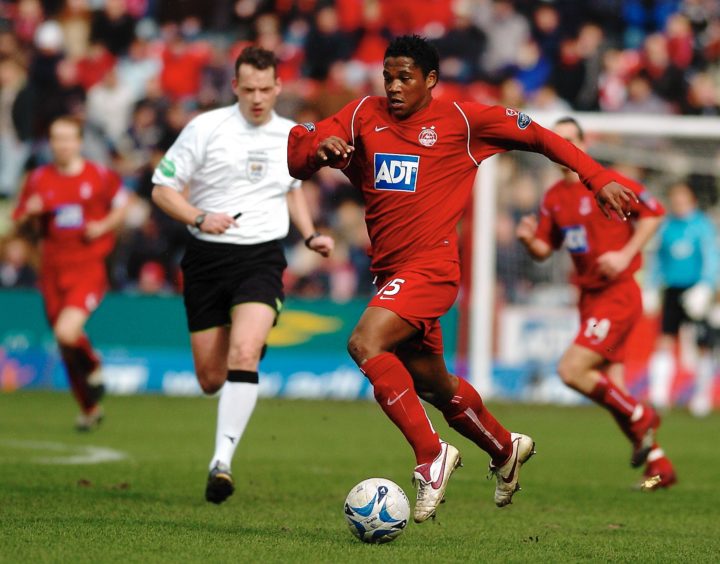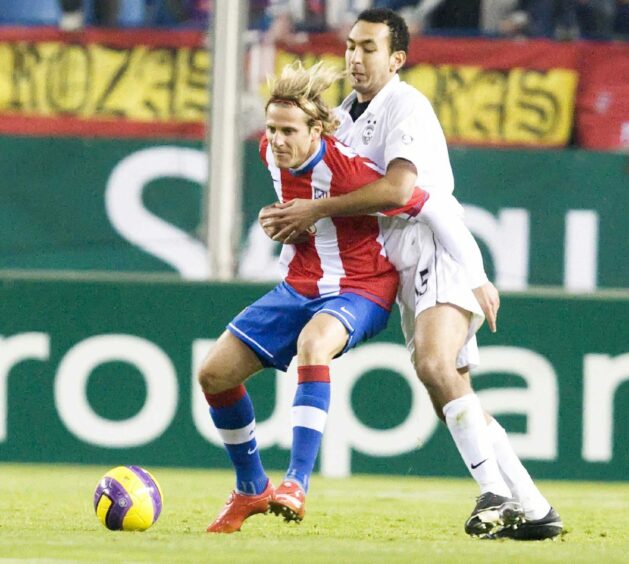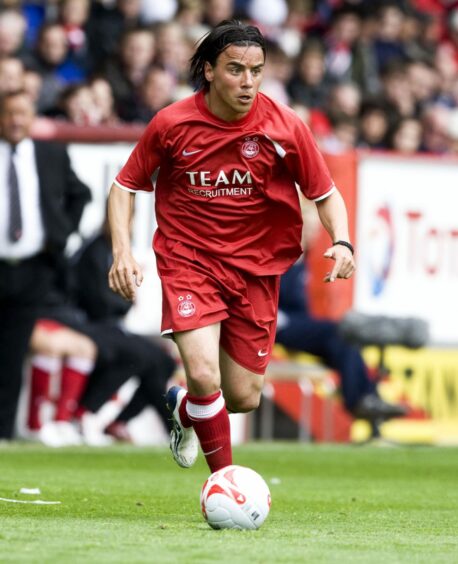Vicente Besuijen isn’t the first Dutch player to join Aberdeen – he’s the latest in a long line of Pittodrie talent from the Netherlands.
The Dons announced they had signed 20-year-old winger Besuijen from ADO Den Haag on Monday, and the signs are good, with his background and YouTube clips suggesting he’s no clogger.
With 10 assists and six goals in the Dutch second-tier this season, and a youth career which included spells with European giants Ajax and Roma, it’s easy to see why the left-field transfer has the Red Army right excited.
Over the years, several players from the storied footballing nation, which is also famous for its tulip fields and windmills, have arrived in the Granite City – but, while some have been smash hits, others have sunk like a bicycle in one of Amsterdam’s iconic canals.
Here are some of those players. What remains to be seen is whether Besuijen will join the list of Pittodrie’s Dutch masters – or Dutch disasters.
Hans Gillhaus
Holland international striker Gillhaus arguably had the best debut of any Aberdeen player ever, with the striker scoring an overhead kick away to Dunfermline and then adding a second with his head to announce himself to the Red Army.
Gillhaus arrived at Pittodrie for £650,000 in 1989, having just played in a European Cup final for PSV Eindhoven.
It was the 1989/90 campaign where the Dons had already won the League Cup and the Scottish Cup was also on its way under Alex Smith and Jocky Scott.
On his home debut, Gillhaus sealed a win over Rangers, and would then scored his penalty shoot-out effort in the Scottish Cup showpiece victory against Celtic at Hampden.
He would ultimately go on to make exactly 100 Reds appearances, scoring 32 times.
His drawn-out departure for Dutch outfit Vitesse Arnheim in 1993 for half the fee he’d arrived for ended his Aberdeen career in a less-than-ideal fashion, but he remains one of the club’s best-ever buys, and is among the top two or three from overseas.
Theo Snelders
Netherlands-born goalkeeper Snelders cost Smith and Scott’s Aberdeen £300,000 (a bargain) when he arrived from FC Twente to replace Jim Leighton in 1988. He is also in the conversation for the club’s best-ever buy/foreign import.
A phenomenal keeper, Snelders made 290 Dons appearances and, in tribute to his performances, was also taken to the Italia 90 World Cup by Holland.
His most important moment in red came in the 1990 Scottish Cup final, with Aberdeen having already lifted the League Cup earlier in the campaign, when he dived low to his left to save from Anton Rogan in the penalty shoot-out. This allowed Brian Irvine to score his spot-kick and secure the double.
Snelders was sold to Rangers in 1996, after he fell out of favour with Roy Aitken.
Paul Mason
Ok, Mason wasn’t from the Netherlands – but that’s where Smith and Scott found him their diamond in the rough.
Reds co-manager Smith had initially gone to watch Liverpool native Mason for legendary Aberdeen boss Alex Ferguson, with a view to him signing for Manchester United.
🚨 PART TWO of ex- @AberdeenFC boss Alex Smith with Northern Goal:
⚽️Finding Paul Mason, and telling @RealEoinJess he'd start '89 League Cup final
⚽️'90 Scottish Cup win memories
⚽️'91 title painApple: https://t.co/Lf7aEKWOdy
Spotify: https://t.co/Q7ws7gAtj5 pic.twitter.com/RgEjG37X3o— EveningExpress Sport (@ee_sport) November 25, 2021
Ex-Everton youth Mason had actually given up hopes of a career in football and gone to Holland to work as a labourer, before his talent was spotted by Groningen and he was offered a professional deal.
United were looking for a full-back, a role Smith thought Mason wasn’t suited to height-wise, especially in the English top-flight, but an impressed Smith thought he’d be a great player for the Dons playing further forward and a steal at £200,000.
He was proved right, with Mason netting 37 goals in 193 games from midfield for the Reds between 1988 and 1993 – including the only two goals in the 1989 League Cup final victory over Rangers – before leaving for an equally-successful spell at Ipswich Town.
A football fairytale.
William van der Ark
6ft 5 striker Van der Ark remains a cult hero for Aberdeen fans, despite only netting 17 goals in 77 appearances – a large amount of them off of the bench – for the club.
He arrived in 1989, following spells with Cambuur and Willem II, and would play a vital role in the cup double-winning campaign of 1989/90.
Van der Ark scored a hat-trick in a 6-2 win over Partick Thistle in the third round of the Scottish Cup, and would come on in both the quarter-final win over Hearts and semi-final win over Dundee United.
He had also scored in the run to the League Cup earlier in the season, and netted against Rangers at Ibrox in the league during his Dons spell.
The big Dutchman left for Utrecht in 1991.
Peter van de Ven
Van de Ven had played in central midfield for a host of Dutch sides – including more than 150 outings for Roda – before joining Smith and Scott’s Aberdeen in 1990.
He would play 67 games for the Dons, scoring five goals, before moving on to Hearts in 1992.
Theo ten Caat
Midfielder Ten Caat joined the Dons in the final months of Smith’s reign in 1991, having previously played with Twente, Veendam and Groningen, and his two-and-a-bit-year spell would include more than a season under Willie Miller.
Making 54 appearances for the club during this period, left-sided Ten Caat struggled to make an impact on the field under Dons legend Miller, but remains a popular figure on social media with the Red Army.
Enjoy and have a good insight from my points of perspective and understanding https://t.co/aAFqfPaSlE
— Theo ten Caat (@CaatTheo) August 11, 2021
Ferne Snoyl
A Jimmy Calderwood Dutch import, Feyenoord loanee Snoyl was at Pittodrie for the final six months of the 2005/06 campaign and managed one goal in 13 games.
Calderwood wanted the pedigreed winger – who was left-footed and skilful, but prone to drift out of games – on a permanent basis for the following campaign, but the fee demanded by Feyenoord scuppered the deal.
Snoyl would go on to have spells with NAC Nijmegen, RKC Waalwijk, NAC Breda and Budapest’s Ujpest.
Karim Touzani
Calderwood brought Touzani in following the defender’s spell with FC Twente in his homeland, and he would go on to play 29 times across the 2006/07 and 2007/08 seasons.
Touzani was rated earlier in his career, and almost completed a big-money deal to join Dutch heavyweights PSV Eindhoven from Utrecht – before having his leg broken in training by future Liverpool ace Dirk Kuyt.
Injuries also limited Touzani to just six starts in his first season with Reds, and that momentum-stalling start meant he never really impressed enough to earn a long-term stay at the club – although he did play well against Atletico Madrid during the Reds’ famous UEFA Cup campaign.
He joined Sparta Rotterdam for free in summer 2009, despite having a year left on his Pittodrie deal, before retiring at the relatively young age of 31.
Jeffrey de Visscher
Right midfielder De Visscher had also played for Twente before joining Aberdeen in 2007, coming through the Eredivisie club’s youth academy.
While struggling to break through at Twente, he had a productive spell on loan in the Eerste Divsion at Heracles, with the side earning promotion to the top-flight, and then – having moved on from Twente – a successful period with De Graafschap, who he helped win the second tier title.
Across 2007/08 and 2008/09, De Visscher made 42 Dons appearances, scoring three times, but struggled to produce his best stuff during his time in Calderwood’s squad.
He then opted to to leave for Cambuur in his homeland, despite having been offered a Reds contract extension, saying he felt he hadn’t received a consistent run of games to show what he could do and that it was affecting his home life.
Dave Bus
The most memorable thing about the Dutch centre-half, who joined on loan from De Graafschap in January 2008, is probably his somewhat funny name.
He joined compatriots Touzani and De Visscher in Calderwood’s squad and the Reds had first refusal if they were interested in a permanent move. They weren’t.
In the end, Bus made three starts, although he did find time to score an own goal against Inverness Caledonian Thistle – a performance then-EE columnist and club legend Stewart McKimmie described as “simply woeful”.
